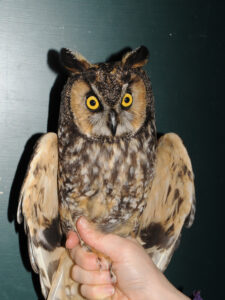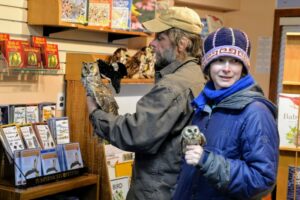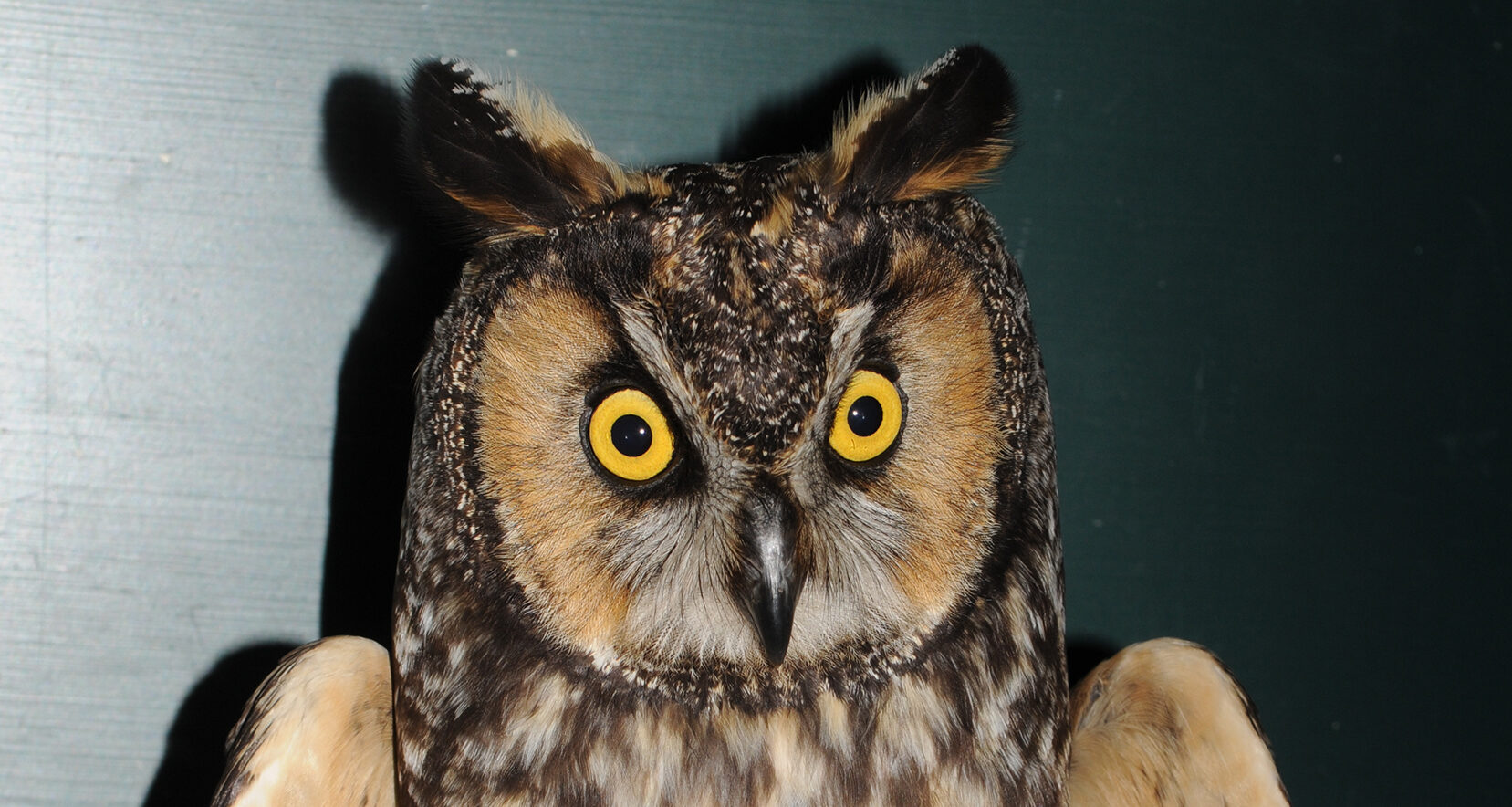It was an excellent year for the spring owl banding at Whitefish Point Bird Observatory (WPBO) in 2021. We were able to band on 69 out of 79 nights from March 15 through May 31. Including previously banded birds, we caught 1,442 individual owls, which represents a record total for a season at WPBO. Of the 1,442 owls, 1,366 were new owls that we banded this spring and 76 were previously banded owls. Unfortunately, this season lacked the diversity of owl species that we often experience in spring at the Point, but Northern Saw-whet Owls (NSWO) occurred in good numbers and it was a record season for Long-eared Owls (LEOW).

One of the Long-eared Owls banded that made it a record-breaking season.
We banded 882 Northern Saw-whet Owls, seven Boreal Owls, 465 Long-eared Owls, and 12 Barred Owls this season. The 76 previously banded owls are also a new record for WPBO and included 70 NSWO, five LEOW, and one Barred Owl. These include 32 owls banded in previous years here at WPBO and 44 banded at other sites. The 32 recaptures of WPBO owls include one NSWO banded in spring 2015 and 13 NSWO originally banded at WPBO as juveniles during the summer owl research. The saw-whet from spring 2015 is now eight years old and is the oldest of this spring’s recaptures. We have received data back on 40 of the 44 foreign encounters. These owls were originally banded at 15 different banding stations — two in Michigan, four in Wisconsin, four in Minnesota, four in Ontario, and one in Kentucky.
The 465 Long-eared Owls banded this spring represent not only a new record season for WPBO but also a new North American banding record. The previous record of 423 LEOW banded in a season was also set at WPBO in spring 2017. The record LEOW migration this spring included an amazing three-night stretch when we banded 107 LEOW. The second night of this stretch produced a record nightly total of 59 long-eareds banded on the night of April 22. That night started with relatively high winds that resulted in a slow start to the night. With two hours left in the night, we had banded 14 long-eareds. The wind then died, and our banding skills were put to the test as 45 LEOW were caught during the final two hours of the night. When people ask us about big nights and we tell them totals like this, a common response is, “That must have been so much fun!” There are many ways to describe an experience like that night, but “fun” is not one of them. It is incredible to witness a big owl migration, but as the banders, it comes with a lot of responsibility. Recognizing that things were suddenly becoming more hectic, we quickly closed some of the nets to help ensure that we could stay in control of the banding. That said, it is an experience we will never forget.
The spring owl banding regularly presents us with challenges, both recurring and new, from which we continue to learn. We feel fortunate to have our lives filled with memories of amazing experiences with owls. It is also gratifying when we see that the efforts we have made over the years produce results like those we experienced this spring. We constantly remind ourselves that the owls migrate through WPBO whether or not we, or anyone else, is here to witness it. The unique opportunity of experiencing the owl migration so intimately, year after year as WPBO’s spring owl banders, is never lost on us. As always, we thank all of you for the support you provide to WPBO’s long-term owl research. It indeed would not be possible without your generosity.
~ by Chris Neri and Nova Mackentley, WPBO spring owl banders

Nova Mackentley and Chris Neri are a legendary pair of raptor banders living at Whitefish Point. In addition to regularly leading the owl banding program every spring at Whitefish Point Bird Observatory, they are accomplished nature photographers.
This article appeared in the 2021 Summer Jack Pine Warbler.

